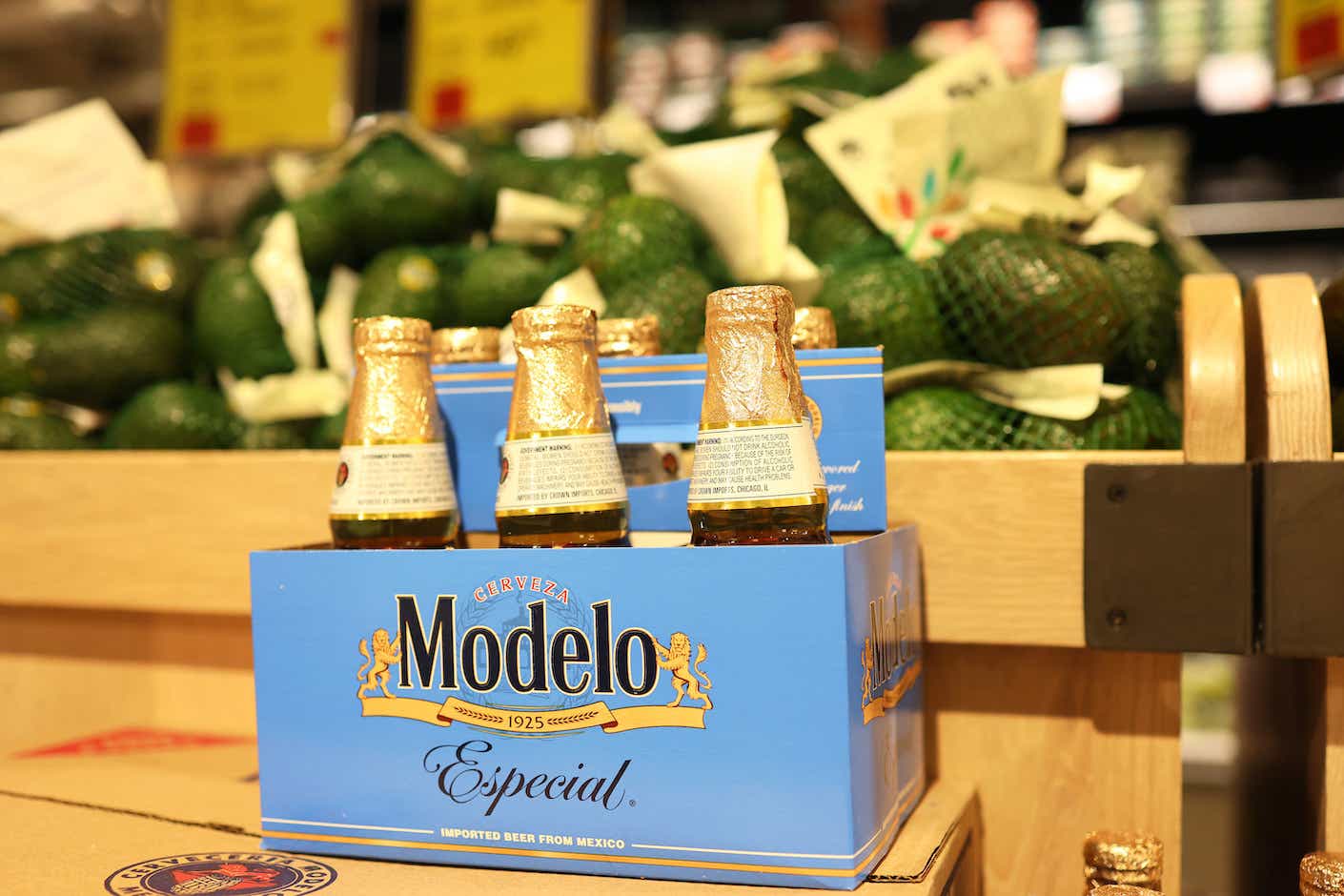President Donald Trump is ramping up tensions with three of the U.S.’s biggest trading partners. On Feb. 27, he announced that his planned tariffs on Mexico and Canada would kick in on March 4, along with an extra 10 percent charge on Chinese goods.
The 25 percent tariffs on imports from Mexico and Canada had been put on hold on Feb. 3 for a month, leading to some uncertainty about whether they would come back once the pause expired. But in a Truth Social post, Trump made it clear he’s moving forward, claiming (without evidence) that illegal drugs “are still pouring into our Country from Mexico and Canada at very high and unacceptable levels,” even though both countries have promised to tighten border security.
Trump argues that these tariffs are meant to protect U.S. interests but admits they could cause “some pain” for Americans. While China supplies the U.S. with clothing, toys, and electronics, tariffs on imports from Mexico and Canada could worsen domestic issues like the housing crisis.
Here’s a look at some key items that could get more expensive now that Trump plans to follow through with his tariff plans.
Cars
Analysts from Wolfe Research and TD Economics estimate that Trump’s proposed tariffs could drive up the average cost of a car by about $3,000. For context, the average price of a used car is already $25,565, which is already too steep for many Americans.
This possible increase is linked to the auto industry’s highly integrated supply chain, with U.S. automakers moving more than a billion dollars’ worth of cars and parts across the Canadian and Mexican borders each day. In fact, more than one in five cars and light trucks sold in the U.S. are built in Canada or Mexico, according to S&P Global Mobility.
One analyst likened Trump’s 25 percent tariff to throwing a “grenade” into auto production.
“You have engines, car seats, and other components crossing the border multiple times before they end up in a finished vehicle,” said Scott Lincicome, a trade analyst at the libertarian Cato Institute, in an interview with Austin’s NBC affiliate KXAN.
Key questions remain, such as whether a car would face the 25 percent tariff each time it crosses the border. Financial website MarketWatch notes that U.S. law doesn’t distinguish between American and Canadian-made parts, adding further uncertainty.
Automakers like General Motors, which produces up to 40 percent of its North American vehicles in Canada and Mexico, could shift more production to the U.S. But, according to TD Economics, moving all non-U.S. manufacturing stateside “would require a 75% boost in U.S. auto assembly and cost automakers more than $50 billion.”
Gas prices
You might soon be paying more at the pump. That’s because Canada is, by far, the largest foreign supplier of crude oil to the U.S.: According to the latest trade data, Canada exported $90 billion worth of crude to the U.S. from January through November last year, compared to Mexico’s $11 billion.
While Canadian crude will face a lower 10 percent tariff, many U.S. refineries — particularly in the Midwest — rely heavily on it. That’s because most refineries are designed to process specific types of crude, with many requiring heavier crude to optimize gasoline, diesel, and jet fuel production, according to the industry trade group American Fuel & Petrochemical Manufacturers (AFPM).
The AFPM has already warned that higher costs to import crude from Canada and Mexico could increase prices at the pump. “We are hopeful a resolution can be quickly reached with our North American neighbors so that crude oil, refined products, and petrochemicals are removed from the tariff schedule before consumers feel the impact,” AFPM president and CEO Chet Thompson said in a statement following Trump’s announcement earlier this month.
Houses
The impending tariffs on Canada could drive up lumber prices, impacting housing costs. Since most U.S. homes are built with wood, experts warn that the new levy may further worsen the nation’s housing affordability crisis.
The National Association of Home Builders (NAHB) has expressed “serious concerns” that higher tariffs could inflate construction costs and deter homebuilders from breaking ground on new projects. In 2023, an estimated $184 billion worth of materials went into single-family and multifamily home construction, with about 7 percent — or $13 billion — coming from imports. Lumber accounted for the largest share at $8.5 billion, with 70 percent of those imports originating from Canada, according to the NAHB.
“Consumers end up paying for the tariffs in the form of higher home prices,” the NAHB said.
Trump has downplayed these concerns, insisting the U.S. has “all the trees” it needs. But while the country does have an estimated 300 billion trees, not all are suitable for home construction: The industry depends on Canadian softwood lumber, a crucial home framing and siding material. According to the NAHB, the proposed 25 percent tariff would be added to the existing 14.5 percent duty, pushing the total tariff on Canadian lumber to nearly 40 percent.
And it’s not just lumber at stake. In 2023, Mexico supplied 71 percent of the $456 million worth of imported lime and gypsum — critical components in drywall — meaning tariffs could disrupt more than just wood-based construction materials.
Electronics, appliances, toys, and shoes
Consumer electronics ranked among the top U.S. imports from China last year, according to federal trade data. These encompass a wide range of devices, from smartphones and laptops to televisions and computer monitors, which line the shelves of American retailers.
Beyond electronics, China also dominates the global home appliance industry, serving as the world’s largest manufacturing hub for products like washing machines, refrigerators, and microwaves. Any disruptions in trade could make these household essentials harder to source and potentially drive up prices for everyday Americans.
Toys and sporting goods are no exception, either. The U.S. relies on China for a staggering 75 percent of its imported toys and sports equipment, including everything from action figures to basketballs. Even more striking, 99 percent of shoes sold in the U.S. are imported, with 56 percent coming from China, according to the Footwear Distributors & Retailers of America, a trade group that includes Nike among its members.
Food
Food, especially fresh produce, could face significant price hikes under the new tariffs.
Mexico is the U.S.’s largest supplier of fruits and vegetables, including tomatoes, avocados, bell peppers, raspberries, and strawberries. If Trump moves forward with his proposed tariffs on the country, you can expect to see higher prices on these essentials.
While Canada represents only 11 percent of U.S. fresh vegetable imports (compared to Mexico’s 77 percent), it remains a key supplier of mushrooms and potatoes. In fact, Canada exported approximately $1.7 billion worth of frozen fries and other “prepared potato” products to the U.S. in 2023.
Meat imports from both countries are also substantial. In 2022, over 60 percent of U.S. agricultural imports from Canada were meat products, with around 22 percent coming from Mexico. The U.S. and Canada share the world’s largest two-way trade in live cattle and beef, but some worry that tariffs could disrupt this vital industry. Will Lowe, chair of Canada’s National Cattle Feeders’ Association, cautioned, “When dealing with live animals, you can’t pivot quickly.”
Ironically, Trump’s tariff announcement on Feb. 3 coincided with the U.S. Department of Agriculture lifting its ban on cattle exports from Mexico, which had been in effect since last November.
Other items that could be impacted include dairy products, such as eggs, the price of which is already soaring as U.S. farmers contend with a bird flu outbreak.
Alcohol
Raising a toast may soon come with a higher price tag.
In 2023, the U.S. imported around $5.7 billion in beer, including popular brands like Modelo from Mexico. The outlook for distilled spirits is similarly concerning but more complicated. In that same year, the U.S. also brought in $4.6 billion in tequila and $108 million in mezcal from Mexico, according to the Distilled Spirits Council of the United States (DISCUS). Additionally, $537 million worth of spirits, including $202.5 million in whisky, came from Canada.
The challenge is that many of these brands can’t easily be shifted to the U.S. market. DISCUS explains that these products are “recognized as distinctive” and can only be produced in their designated countries.
On top of that, the U.S. is already facing a potentially devastating 50 percent tariff on American whiskey from the European Union, set to take effect in March. Tariffs on spirits from Mexico and Canada could trigger even more retaliatory measures, worsening the plight of an already struggling industry.
“At the end of the day, tariffs on spirits products from our neighbors to the north and south will hurt U.S. consumers and lead to job losses across the hospitality industry, just as these businesses continue to recover from the pandemic,” Chris Swonger, president and CEO of DISCUS, said in a statement.









